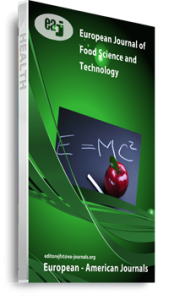Lake Malombe is connected to Lake Malawi; the latter is an African Great Lake endowed with the World highest fish species diversity. Thus, fish species of the two lakes are commonly shared and form valuable food resource. The Lake Malombe fishery resources have been exploited to alarming levels by residents and mobile fishermen that use different types of fishing gears; the same has also affected parts of Lake Malawi. This study was conducted on 18 landing sites in eastern and western regions of Lake Malombe on 7-21th July 2017 to provide baseline information on performance and impact of seven fishing gears (Kandwindwi, Nkacha seine, Mosquito net, Gill nets, Fish traps, Handlines and Longlines) on the Lake Malombe fishery. This study: (i) updates the status of artisanal fishing gears, (ii) determines catch rates, (iii) determines the size and species composition, (iv) assesses gear selectivity, and (v) provides recommendations for the management of the fisheries. Species identification, length and weight measurements were done in collaboration with fishing gear owners. Beach name, gear owner, number of crew, craft type, gear type, fish catch, mesh size, fishing times, landing times and fishing ground were recorded using reference manuals on-site to compare morphometric and meristic characters of the fish species. Fish size and length frequency distribution were modelled using the Gamma distribution function to compensate for skewed distribution of the data from seine nets. Size- specific selectivity of the “Nkacha” seine net, being the dominant, was modelled using the logistic model. Overall total catch sample was estimated at 676 kg from 33 gears, the catch per unit effort (CPUE) was 0.1 and 40.1 Kg/trip with an average of 11.3 ±16.3 Kg/trip. Local seine nets known as Kandwindwi and Nkacha, and Gill nets recorded the highest CPUE of 40.1, 28.4 and 8.9 Kg/trip, respectively. Fish traps, Handlines, Mosquito seine nets and longlines were found less effective harvesting 1.1, 0.5, 0.3 and 0.1 Kg/trip, respectively. Fish catches comprised of 19 genera and 28 species classified into four fish families; Cichlidae, Cyprinidae, Claridae and Characidae. Cichlidae recorded highest abundance accounting for more than 77% of the catch followed by Cyprinidae (18%), Claridae (5%) and Characidae (0.003%). Nineteen (19) genera comprising of Nyassachromis (31.8%), Otopharynx (21.2%) and Engraulicypris (16.3%) constituted more than 75% of fish catches. There were over 28 taxa in landings from all fishing gears, the majority of the catches being composed of five species;Nyassachromis argyrosoma (31.8%), Otopharynx argyrosoma stripe (17.6%),Engraulicypris sardella (16.3%), Lethrinops lethrinus (6.5%) and Copadichromis chrysonotus (4.8%) making up of more than 75% of the landings. A decline of 60.7% (from 56 taxa to 28 taxa) was recorded among fish catches from Nkacha seines. The size of fish ranged from 17 to 380 mm TL with an average of 69.1±43.2 mm TL and the smallest fish sizes-at-capture observed in all seine nets ranged from 47 to 64.5 mm TL. Meanwhile, the sizes-at-capture for all fishing gears ranged from 47.0 to 124.4 mm TL and 77.3 ±28.1 mm TL was the mean value. Fish sizes-at-capture showed that most fishing gears were unselective, catching mostly juvenile forms. Naturally, this contributed to heavy declines in catches, further confirming why recorded catches were 12,000 tons in 1981-91 and only 3,820 tons in 2016. The intrusion or invasion of Usipa (Engraulicypris sardella) from Lake Malawi into Lake Malombe is a new phenomenon indicating a change in environment and species composition. Removal of illegal gears combined with a Rights-Based system should be considered while refining legal instruments. Above all, political will needs to be galvanised if the fishery is to be restored
Keywords: Declining fish catches, Emergence of Usipa, Lake Malombe, Nkacha and Kandwindwi, reduced fish species diversity

